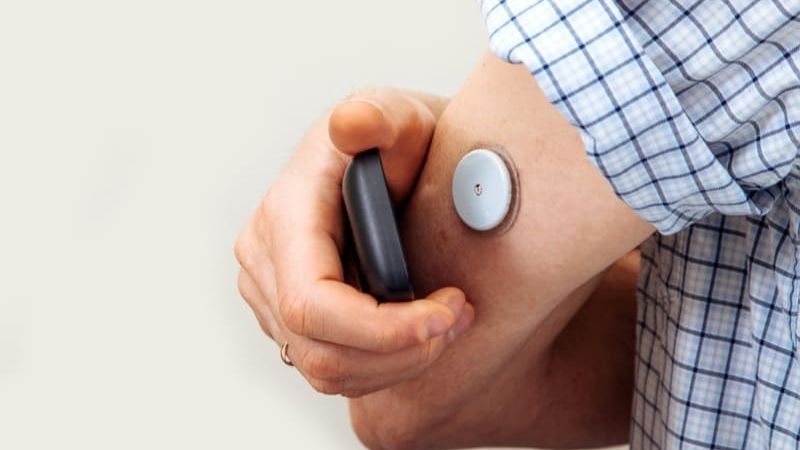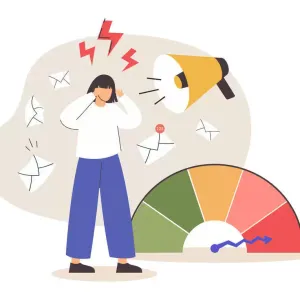

Our Review Process
Our articles undergo extensive medical review by board-certified practitioners to confirm that all factual inferences with respect to medical conditions, symptoms, treatments, and protocols are legitimate, canonical, and adhere to current guidelines and the latest discoveries. Read more.
Our Editorial Team
Shifa Fatima, MSc.
Author
Dr. Apoorva T, MHM.
MEDICAL ADVISOR
Diabetes Reversal Story
This personal story is from Mr. Anand M Tatti, a Bengaluru based septuagenarian, retired professor and self-confessed hypochondriac. Mr. Anand enrolled into the Sugarfit Programme in early January of 2021, where he not only reversed his prediabetes but also continues to maintain normal blood sugar values since then. In this article, he shares how his experience of using a continuous glucose monitor led to new insights and many other unexpected personal benefits.

I was enthralled when i realised how revolutionary this tool is! The real-time feedback has truly made a profound impact on how I look at my day-to-day eating and other lifestyle habits.
Read on as he recounts his experience of using a Continuous Glucose Monitor, and why he thinks his story will inspire others to do the same.
Now in my 70's, I still remember the times when Diabetes was largely believed to be, and in fact, even seen to mostly affect only those who had a family history. Well, those days are long gone and we currently live in a time where nobody is spared; children, adults, pregnant women, senior citizens, homemakers, CEOs, movie stars, and even our leaders.
But no matter what the cause; genetics, stress, nutrition, obesity, or a consequence of another illness, the way ahead lies in early detection, self-management, and maintaining optimal blood sugar levels where prevention may not be possible.
Sounds simple enough, but it's not. Diabetes is often called a Silent Killer since there are virtually no symptoms seen in the early stages, making it hard to diagnose or identify until it has already progressed to a stage that isn't ideal by any means. The testing however does not end with diagnosis, and most individuals have to keep testing themselves at regular intervals to confirm they're on the right track, and their blood sugar levels are behaving well. Like me if you are also a person who detests needles and starts panicking or getting anxious every time you have to get a blood test done, you’re not alone.
But unfortunately, that doesn’t change the fact that you will need to get injections or your blood drawn at some point in the future — whether it’s because of a vaccination, a health condition, a blood donation or just to know your blood group.
Testing for blood sugar or blood glucose levels is usually done with a finger-prick test using a device called a Glucometer (a portmanteau of Glucose and Meter) which can be done by individuals on their own, to measure glucose levels in the blood for a moment in time.
To learn more, check out the article on the Benefits Of Self Monitoring Of Blood Glucose.
A recent and more advanced way to measure glucose levels is through a modern measuring process called Continuous Glucose Monitoring (CGM) using a CGM device. CGM measures glucose levels in your interstitial fluid which is found just below the surface of your skin, by inserting a small and flexible titanium wire. The device is usually fixed to a fleshy part of the arm where it remains embedded for 14 days and can sense, record, and store your glucose readings. This data can also be transmitted to your doctor and further analyzed as a reliable indicator of what affects your glucose levels. CGM has enabled individuals with diabetes to correct their insulin dosing ratios and avert serious health events, much more quickly than traditional finger-prick tests.
To learn more about Continuous Glucose Monitoring, check out our article on A Starter's Guide To Continuous Glucose Monitoring (CGM)
Table of Contents
My Story
My experience with CGM began when my annual health check diagnosed me as having prediabetes. This immediately prompted my daughter to enroll me into the sugar.fit program. As a part of the program, I got an opportunity to try the CGM process, wear the device for the next 2 weeks and track variations or responses of my sugar levels to anything and everything (diet, exercise, stress, sleep, and more).
Like I mentioned before, I am the kind of person who is scared of needle pricks, injections, medication, scanning, so on and so forth, to the extent where I even close my eyes when my BP is being measured. Why? - Well, what if I get anxious just looking at the reading? That in itself could make my BP shoot up and and prompt the machine to give a higher reading right?
So its no surprise that when I learnt I had to stick a needle into my arm for 2 weeks, I was unsettled and had a million questions about how painful the patch, attachment and needle could and would be? If I had to recount the noisy internal monologue that played out in my brain at that point - this would be it.
How will I withstand the pain for a whole 2 weeks?
What if it makes my BP shoot up? Should I ask my doctor for a painkiller? Should I get my BP medication upped?
Will it restrict my arm movement? Can I sleep on my arm? Take a bath? What if the water damages it?
What if I displace the needle? Will it start bleeding? Or even worse....get infected??!
What if the data overflows beyond the storage? What if there is a lag between my food intake, exercise, and the recording?
How reliable is this anyway? Should I even be trusting this data??
Fortunately, I had unencumbered access to my health coach, onto whom I unloaded my barrage of questions, fears, suspicions and a few conspiracy theories; which she answered most graciously, and helped assuage my anxiety to a large extent.
It wasn't too long after this, that the device was home delivered to me through a courier service. Although I had plenty of time to go through the instruction manual, I was still nervous wondering if I was expected to install it myself and if Murphy's Law would be kind enough to look the other way and forget about proving - if something can go wrong, it will.
Luckily, the optimist in me took over and came up with a corollary fix for Murphy's Law - If something can go wrong, it will not happen this time. However, I decided not to tempt fate and wait for the health technician to come and fix the device for me.
He came! He Saw! But, I conquered.....my needle phobia, that is!
The technician disinfected an unobtrusive area at the back of my upper arm and calibrated it with a device he had brought along with him, and that was it - C'est tout!
My Recommendations
Not only did I not feel any pain or discomfort, after the first day I even forgot that a Sci-fi looking device was on my body. I did not wish to be bothered with downloading the data or removing the CGM after 14 days, since I wanted to spare myself the anxiety of obsessing over the fluctuations. However, for the more daring and willing, it is possible to do more precise and ongoing monitoring (with alerts) using a phone-based app if required.
All I had and chose to do, was to record the information about what, when, and how much I ate, drank, took medicine, walked, exercised, slept, etc. in order to correlate it with the readings later. Analyzing these readings continuously, makes it possible to implement immediate interventions for a mid-course correction of food intake, exercises, sleeping - waking up habits, and medications. Thus making CGM an incredible way to be more conscious about what and how you wish to macro/micromanage diabetes to achieve both short and long-term objectives. Also know how to reverse prediabetes.
Bottom Line
To conclude, after being a part the sugar.fit program, I've realized that, effective management of Type 2 Diabetes requires a clear understanding of how your body reacts and responds to the condition. The CGM device is an apt way to get that information and has proved to be reliable and accurate in its interpretation of readings as they correspond to your activities in real-time. The CGM is a beneficial tool in the diabetes recovery journey to point and nudge us in the right direction.
There are already advances made in the device including improved features and models with non-invasive attachments. We could soon be seeing an integration of the sensor, installation, data storage, analysis, and reporting all from a single wearable patch similar to a simple band-aid. On a lighter note, the CGM is a revolutionary tool in diabetes care, but if your device ever starts telling your brain when and what to do - Run! That's a robot uprising. Read more about diabetes control programme.

FAQs
1. How does CGM Work?
A CGM is a device that is mostly applied to the fatty portion of the upper arm. It has a tiny sensor inside of it that, when comes in contact with the blood, will provide a blood sugar reading. This reading is recorded every 3-5 minutes and is done continuously, even during the night. Any interaction with food, stress, drinks, exercise, etc can be noted here with the help of the blood sugar readings. At the end of 10-14 days, the reader (a mobile phone-like device) will be used to scan the data, and a graphical, as well as a numerical representation of the blood sugars, will be received. This data can be used to analyze and titrate the dose of insulin at certain times in the day if required.
2. What factors affect the accuracy of CGM results?
Different factors can affect the accuracy of a CGM result:
- Faulty device
- Technical malfunction
- Trouble with the sensor
These instances are quite rare as the CGMs are tested and approved several times before they are released for production into the market.
Disclaimer
This website's content is provided only for educational reasons and is not meant to be a replacement for professional medical advice. Due to individual differences, the reader should contact their physician to decide whether the material is applicable to their case.




